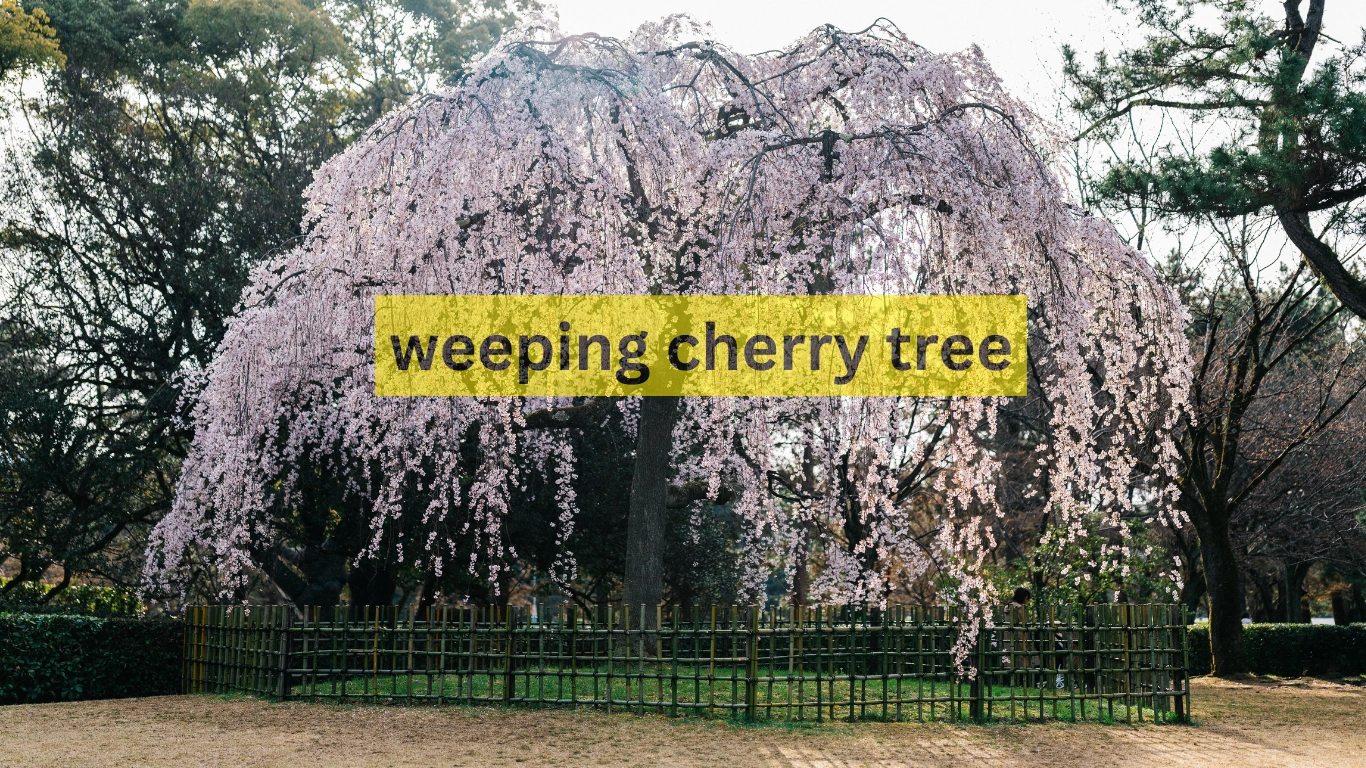Weeping Cherry Tree: Graceful Addition to Any Landscape
When spring arrives, few sights are more breathtaking than a blooming cherry tree varieties. With its cascading branches draped in pink or white blossoms, this ornamental tree brings timeless beauty to gardens and parks. Loved for its dramatic shape and seasonal flair, the weeping flowering cherry has become a favorite for homeowners, landscapers, and nature lovers alike. Whether you’re planting your first tree or enhancing an existing landscape, understanding this tree’s features, care, and significance is essential.
What is a Weeping Cherry Tree?
A weeping tree is a type of cherry tree known for its gracefully drooping branches. Unlike upright cherry trees, this one grows with arching limbs that hang downward like a waterfall. Most varieties bloom in early to mid-spring, producing soft pink or pure white flowers. As the flowers fade, the green leaves emerge, offering a lush look throughout summer. In fall, the leaves often turn yellow or orange before dropping.
Botanically, these trees belong to the Prunus genus. Some common cultivars include Prunus subhirtella ‘Pendula’ and Prunus x yedoensis ‘Shidare Yoshino’. Most are ornamental and do not produce edible fruit, although some types may form small, sour cherries that birds enjoy.
Growth Habits and Tree Characteristics
weeping cherry blossom tree vary in size, shape, and growth speed based on the variety. Dwarf types grow up to 10 feet tall, while full-sized ones can reach 20 to 30 feet in height. Their width often matches or exceeds their height due to the arching limbs. The bark is smooth and grayish, and the tree trunk typically remains straight while the branches weep in a dome-like form.
| Feature | Description |
|---|---|
| Height | 10 to 30 feet (variety-dependent) |
| Blooming Time | Early to mid-spring |
| Flower Colors | Pale pink or white |
| Foliage | Green in summer, yellow/orange in fall |
| Lifespan | 20 to 40 years on average |
| Sunlight Requirement | Full sun (6+ hours of direct sunlight daily) |
How to Plant a Weeping Cherry
Choosing the right location is key to healthy growth. The flowering weeping cherry thrives in full sun and well-drained soil. You should avoid areas prone to waterlogging, as soggy roots can cause disease. Dig a hole twice as wide as the root ball but no deeper than the root system. After placing the tree in the hole, backfill with soil, water thoroughly, and add mulch to retain moisture.
The best time to plant is in early spring or fall when the weather is cooler. This helps the tree establish roots without heat stress. Young trees need regular watering until their root system develops.
Caring for Your Tree: Simple Tips
While the weeping cherry plant is low-maintenance, some basic care helps keep it healthy and beautiful. Water young trees weekly, especially in dry weather. Mature trees typically need less watering unless there is a drought. Fertilize in early spring using a balanced slow-release fertilizer.
Pruning is important for shape and air circulation. Do it in late winter before new growth appears. Remove any dead, crossing, or crowded branches. Always use clean tools to prevent infection.
cherry blossom tree weeping can face issues such as aphids, borers, or leaf spot. Inspect leaves and bark regularly, and treat with neem oil or insecticidal soap if pests appear.
Why People Love Weeping Trees
One of the biggest reasons people love this tree is its stunning springtime show. The blossoms are soft and fragrant, often covering the branches in a delicate curtain. In Japanese culture, cherry blossoms represent the fleeting nature of life, beauty, and renewal. Planting a cascading cherry tree adds not just charm but also symbolism to your space.
In landscape design, this tree works as a dramatic focal point. Its unique shape makes it perfect for placing in front yards, near ponds, or along walkways. It pairs well with smaller shrubs, ornamental grasses, and flowering bulbs like tulips or daffodils.
Popular Varieties of pink backyard weeping cherry
There are several types to choose from, each with slightly different characteristics. Some have larger blooms, while others are better for smaller gardens. Below is a quick overview of a few popular options:
These varieties differ in size and color, but all offer a strong weeping form and springtime beauty.
Is It Worth Growing a cherry tree ?
Absolutely! If you’re looking for a tree that offers seasonal beauty, unique shape, and minimal upkeep, the drooping cherry tree is a fantastic choice. It doesn’t just enhance the curb appeal of your home it creates a sense of tranquility and elegance. With the right care, your tree will be a source of pride and joy for decades.
Besides aesthetics, it also supports local biodiversity. The blossoms attract bees and pollinators in spring, while birds may nest in its branches or eat its small fruits. Even in winter, the bare weeping branches add structure and interest to your garden.
Conclusion:
A weeping cherry is more than just a tree it’s a living work of art. From its soft, sweeping limbs to its vibrant blossoms, this ornamental tree brings elegance and grace to any setting. Whether planted in a front yard, near a patio, or as part of a garden design, it’s sure to turn heads and lift spirits. With the right care and placement, your tree can provide beauty through every season.
,FAQs
Q1: When is the best time to plant a weeping cherry ?
Early spring or fall is ideal to avoid heat stress and help root development.
Q2: How big does a hanging cherry tree get?
Most grow between 10 and 30 feet tall, depending on the variety.
Q3: Do weeping cherry trees need full sun?
Yes, they need at least 6 hours of direct sunlight daily for best bloom.
Q4: Are weeping cherry trees messy?
They do drop blossoms and leaves seasonally but are easy to clean up.
Q5: How long do weeping cherry trees live?
On average, they live 20 to 40 years with proper care.







